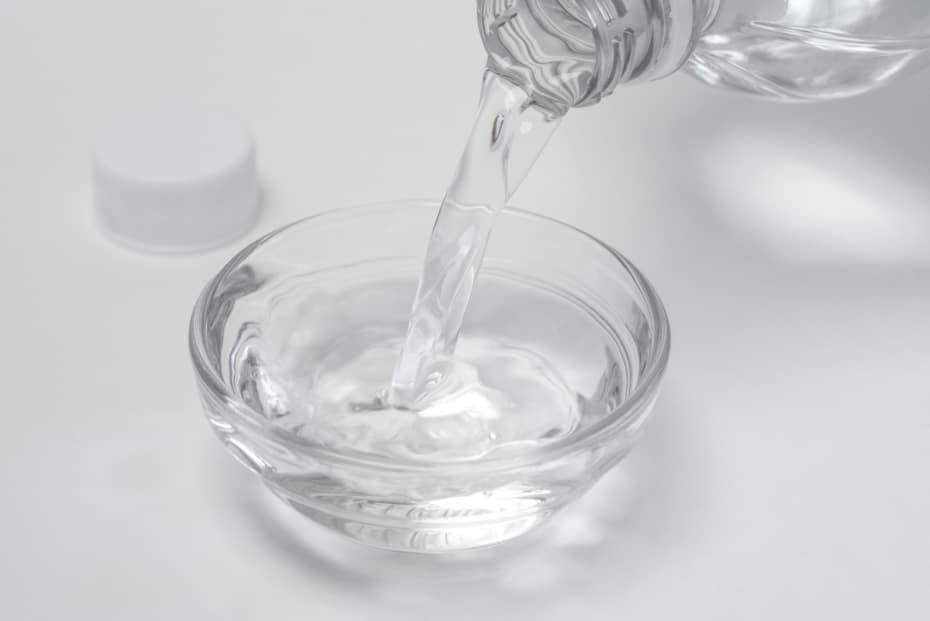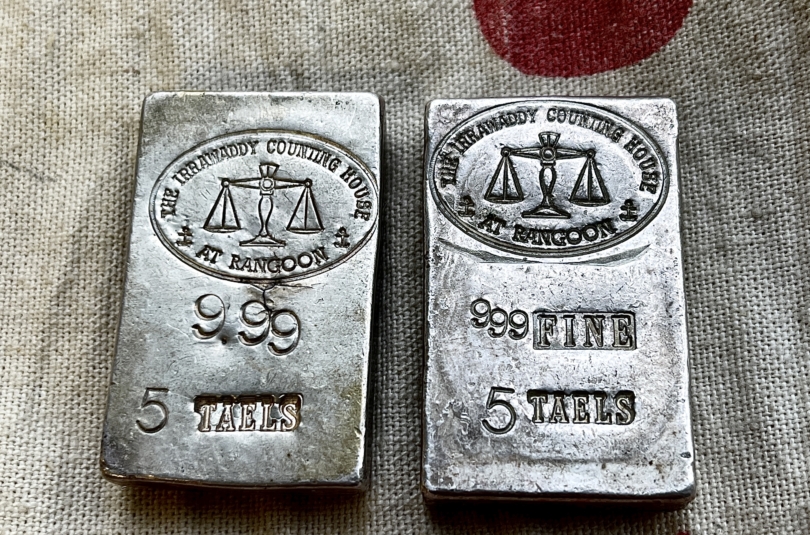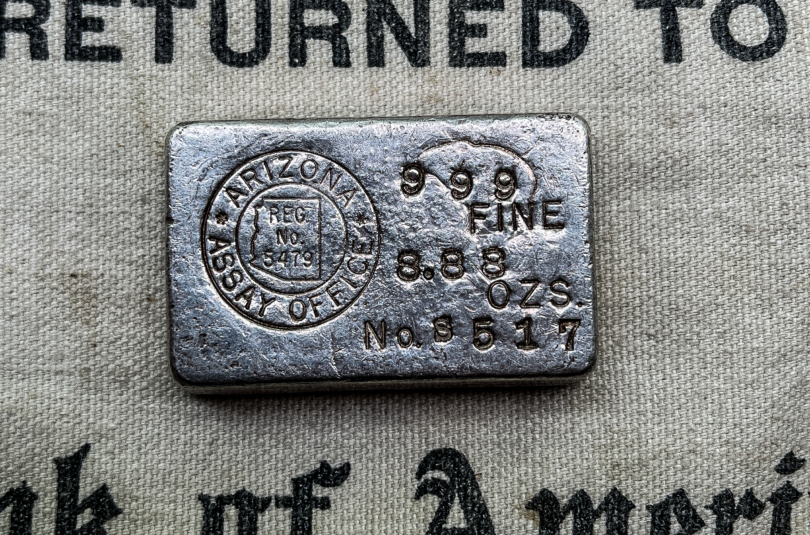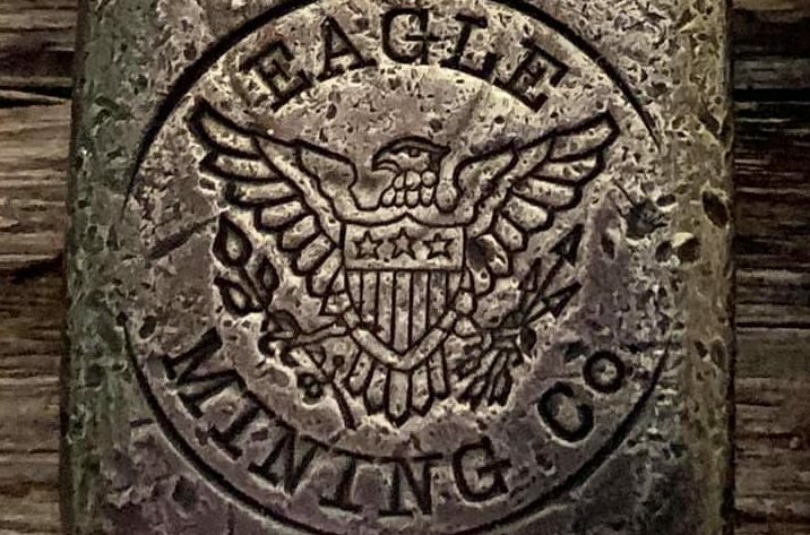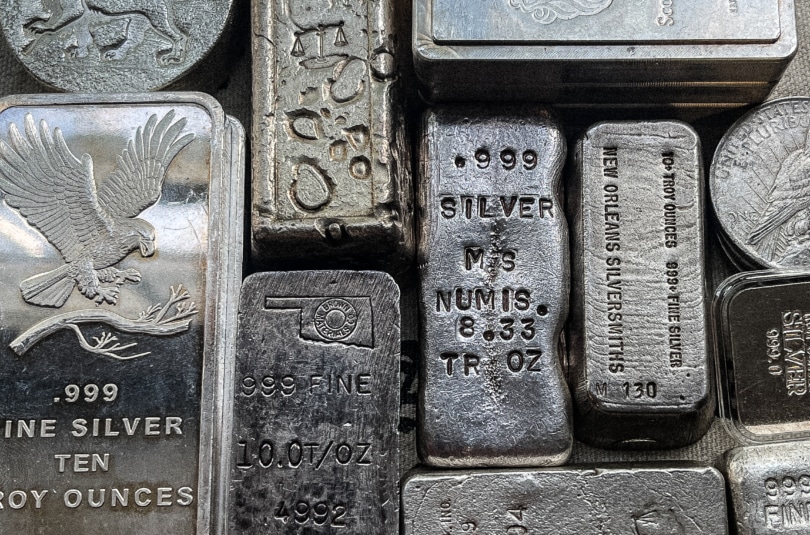What if we told you that many household items could replace elaborate equipment and help you separate real silver from fake? Would you trust these time-tested methods and use them to authenticate silver bars or coins?
For instance, you’ll find vinegar in most households, and this domestic jack-of-all-trades could be a readily-available method for telling apart real silver from fake.
Sounds too good to be true? It’s not, so let’s learn how to test silver bars or silver coins with vinegar.
What Types of Silver Are Out There?
Silver has occupied people’s minds and hearts for centuries, starting from ancient cultures across Europe and the Middle East. And although silver’s popularity has diminished slightly in recent years, this precious metal is still a solid investment option with bright prospects.
However, silver items come in various shapes and sizes, with varying percentages of actual precious metal. Shape-wise, collectors mainly focus on silver bars, either hand-poured, cast, or pressed. The most popular sizes for these pure silver pieces are 1-ounce, 5-unce, 10-ounce, and 100-ounce bars.
Silver’s purity is where things get more complex, given that silver items typically come with traces of other metals like copper. For example, sterling silver comprises 92.5% silver and 7.5% copper, while Britannia silver has 95.83% purity. Yet, most silver bars of value for modern collectors are ‘three nines fine, ‘ meaning they have 99.9% purity.
In addition, many items pretending to be silver contain little to no precious metal, making the situation even more confusing for enthusiasts and investors.
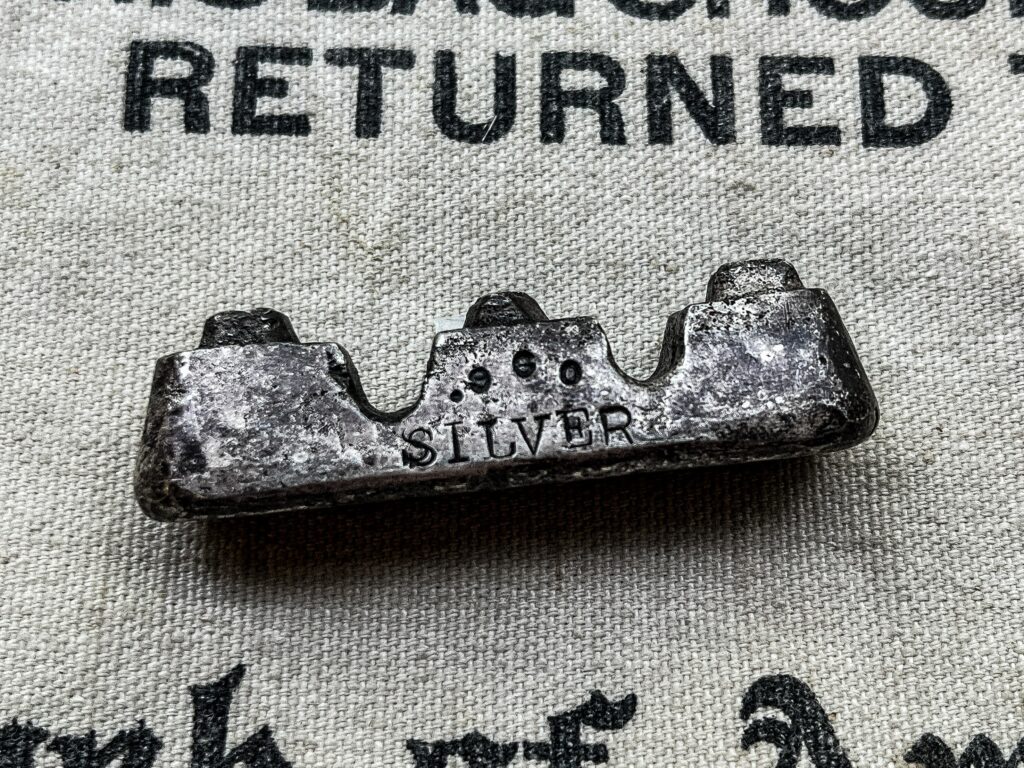
Why Is Testing Silver for Authenticity Important?
Fakes, forgeries, and counterfeits are every collector’s nemesis, and silver bar enthusiasts are no exception. Fake silver bars are more common than most think, and paying for these pieces can be a costly mistake.
The primary difference between fake and real silver relates to purity, i.e., the content of actual precious metal in the item. As we said, investment-grade silver has three nines stamped (999) on it for a reason. Any silver bar or silver coin with a lower content of silver than written on the hallmark should have no place in your collection.
Therefore, testing silver bars for authenticity is essential for creating a respectable portfolio. Hallmarks are a form of consumer protection, but trusting these markings is a typical beginner’s mistake. Instead, verify the authenticity, check the silver for purity, and separate real silver from fake.
For instance, learning how to test pure silver with vinegar can be wise and beneficial for collectors and investors worldwide. So, let’s cut to the chase and see how this sour liquid reacts with silver pieces.
What Is Vinegar, and Should You Use It?
Before testing silver with vinegar, we should first explain the nature of this liquid to understand why it interacts with the shiny precious metal.
The word vinegar comes from French, and ‘vin aigre‘ translates to sour wine. In a way, the name is self-explanatory, given the vinegar’s sourness and origin. After all, vinegar is a product of fermentation, albeit an alcohol-free liquid.
Namely, vinegar comprises acetic acid, water, and trace compounds, including flavorings. During the two-step fermentation process, yeast will first transform simple sugars into ethanol, and then ethanol becomes acetic acid (CH3COOH).
Typically, the concentration of acetic acid in vinegar is 5-8%, but higher acidic content is also possible. The most common sources of sugar or starch for fermentation and creation of vinegar are fruits, rice, potatoes, and whole grains.
People have used vinegar for centuries because this aqueous solution offers various health benefits. However, we’ll focus on the chemical aspects of vinegar and its reaction with silver.
How Does Vinegar React With Silver?
As we said, vinegar contains acetic acid, and this element is the secret weapon for testing whether silver is real or fake. Unlike inert noble metals that don’t react with acids, precious metals like silver interact with acidic content. Some combinations can have severe effects, even dissolving the metal, while others generate harmless side-products, such as hydrogen gas.
Acidic acid from vinegar boosts the oxidation of silver, which is a natural process of forming silver sulfide (Ag2S) when silver interacts with sulfur from the air. You might know it as tarnish or the black, green, or brown patina that forms on the surface of silver bars, coins, or jewelry. (There is also an acid test to determine whether you have pure silver or not).
Real silver turns black gradually and relatively slowly, but vinegar can step it up a notch and speed up the process. So, if you put silver bars in vinegar and leave them for 48 hours, a black residue will form on the surface of each piece.
Acidic acid induces oxidation, making the tarnish more pronounced. Given that this reaction is the basis of how we test silver with vinegar, you can see that the process is effortless and hassle-free. Of course, it has its share of pros and cons, and we’ll explain them next.
The Pros and Cons of Using Vinegar To Test Silver
Although vinegar is one of several methods for testing silver, many collectors turn to this acidic liquid because it offers reliable and accurate results.
After all, you’ll find vinegar in almost any home or local store, making it within reach whenever you need to detect fake silver pieces. In addition, the black residue on pure silver after the vinegar treatment will leave no room for doubt.
On the other hand, testing silver with vinegar might seem counterintuitive and confusing because the same liquid can clean and polish your silver bars. After soaking silver in vinegar, you can use a soft cloth to wipe off the tarnish and gently restore the shine.
In addition, the most significant disadvantage of testing silver with vinegar is the duration because the process takes too long. The time-consuming reaction will only work for precious metal collectors who don’t need results asap.
On top of that, a bit of precious metal goes off with the cloth each time you wipe off the tarnish. The quantity might seem insignificant, but it could reduce the value and overall quality of your silver bars after a prolonged period.
Other Methods for Testing Silver
Silver enthusiasts have a rich arsenal for separating real silver from fake, and vinegar is one of many options at their disposal. Here are the most reliable techniques:
– Check the markings
Of course, everything starts by checking the label, and we already mentioned the importance of hallmarks on silver bars. So, study the markings to decipher silver pieces’ origins, authenticity, and value.
– The Sigma
If you’re serious about getting accurate results and you frequently need to test multiple types of precious metals (silver, gold, platinum) for authenticity, we’d recommend just spending the money to buy a Sigma machine. It can test all types of precious metals at different purity levels….which is handy on the different types of silver items you may collect (silver plate, silver flatware, silver coins, silver jewelry etc.). These machines can typically be found on Ebay for around $750-$1000. While somewhat expensive, it’s certainly worth it if you are building a big collection.
– The Magnet Test
Since silver is a non-magnetic metal, the magnet test can give accurate and trustworthy results. To verify if your silver bar features real silver, tilt it at 45 degrees and place a neodymium magnet near the top. If it slides down slowly or stays in place, you’re dealing with steel or other metals.
– The Ice Test
Among other qualities, silver’s thermally conductive nature makes it valuable for many modern industries. In addition, you can use this property to put an ice cube on the silver bar and see if the ice melts exceedingly fast.
– The Sound Test
Finally, you can apply the famous ‘ring’ test to see if the silver piece will produce a unique, high-pitched sound. In other words, strike the silver coin or the silver bar and listen for the distinctive ringing sound that should echo for a couple of milliseconds.
– The Acid Test
Similar to testing with vinegar, the acid test is a chemical test that uses acids to determine the purity of silver. To do this test, a small amount of acid is placed on the surface of the silver. If it is pure silver, the acid will not react. However, if the silver is not pure, the acid will cause a chemical reaction that will change the color of the silver coin, silver bar or silver jewelry.
Final Thoughts
Even though testing silver is not the only method for proving silver’s authenticity, many enthusiasts and silver bars owners could benefit from using this household liquid. After all, vinegar’s accessibility and widespread usage make it an excellent catalyst for confirming the authenticity of silver bars and other silver items.
The vinegar test might be time-consuming and somewhat counterintuitive, but if you are serious about telling fake silver from pure silver, it is a worthwhile skill to know. Lastly, a small word of caution. As collecting vintage silver bars becomes more popular, we are seeing more and more instances of fraudsters using real silver to fake vintage bars. So even though, your bar is silver, it’s still advised to do your due diligence to make sure it’s not a fake vintage reproduction!
